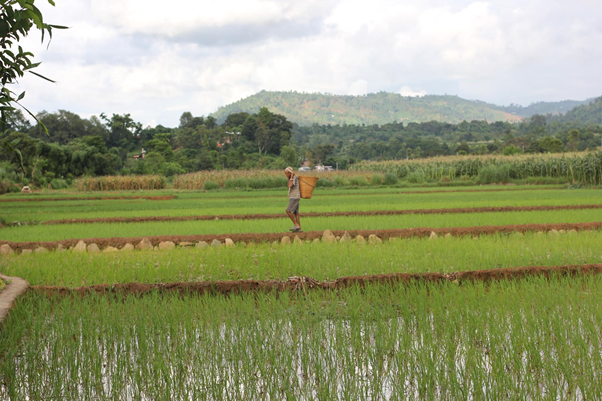Key concerns for credit institutions in agriculture & importance of meso-level insurance

Photo by Jack Melbourne
Efficient last mile delivery of key financial services to small and marginalised farmers, has been at the heart of the implementation challenges that agricultural finance institutions in India have been facing over the past two decades. The economic fallout of the COVID-19 crisis and the Government’s proposed path of recovery reiterates the importance of these institutions in servicing ‘Bharat’. However, without addressing current bottlenecks in the implementation process, the influx of financial resources may not reach its intended beneficiaries. In its attempt towards the Prime Minister’s vision of building a self-reliant economy through the Atmanirbhar Bharat initiatives — in its third tranche of economic relief packages, the government announced a number of schemes focusing on the agricultural sector.
Some of the stimulus packages are establishing the Agri-infrastructure Fund of 1 lakh crore rupees for development of agriculture infrastructure projects at farm-gate and aggregation points [such as cooperative societies and Farmer Producer Organizations(FPO)]; Concessional Credit Boost to farmers that will provide institutional credit facilities worth 2 lakh crore rupees to 2.5 crore farmers at concessional rates through Kisan Credit Cards (KCC). An additional fund of 30,000 crore rupees will be released as emergency working capital for farmers. This fund will be disbursed through NABARD to Rural Cooperative Banks (RCBs) and Regional Rural Banks (RRBs) for meeting their crop loan requirements and is expected to benefit 3 crore — small and marginal farmers. This is in addition to the financial support of 90,000 crore rupees that will be provided by NABARD to RCBs and RRBs to meet their crop loan demand for this year. An Animal Husbandry Infrastructure Development Fund of 15,000 crore rupees will be set up with the aim to support private investment in dairy processing, value addition, and cattle feed infrastructure to increase capacity in the dairy industry by 50 percent. All of these measures targeting the marginalised communities of the primary sector, rely heavily on formal credit institutions. There are two important concerns with the release of these schemes that need to be addressed.
Firstly, these formal credit institutions fall short in terms of their reach: largely excluding small and marginalised farmers. These farmers, who are systematically left out of the existing formal credit mechanism, will also be excluded from reaping its benefits. For instance, the concessional credit to be utilised by farmers requires enrolment through KCC. As the RBI’s Internal Working Group estimate (2019) suggests, only 45 percent of the farmers in India possess an operational KCC.
Secondly, the agrarian distress and rural indebtedness have continued to worsen over the years; piling on to the already significant stress on financial institutions. With the COVID-19 crisis and the subsequent lockdown, agriculture now faces an extremely challenging and uncertain season. Heavy reliance on credit institutions and an uncertain crop season may result in an increase of defaulters, putting financial institutions at risk of non -recovery of these loans.
Mitigating such risks thus calls for innovative measures. Crucial times such as these underscore the importance of meso-level insurance to help financial institutions gear up and develop resilience mechanisms to withstand shocks. Meso-level insurance covers ‘risk-aggregators’ such as banks, microfinance institutions, FPOs or agri-businesses — in addressing the various risks that arise out of agricultural shocks which may lead to an increase in the number of defaulters. Here, the aggregator is the policy holder, insured party and direct client of the insurer. For example, financial institutions can purchase policies to cover default risks arising out of major agricultural shocks; Agri-processors can purchase policies to cover the risk of non-recovery of inputs advanced to farmers or insufficient supplies of raw materials due to agricultural shocks. In turn, the aggregator retails its benefits to farmers through a variety of services.
The enrolment of farmers and fishermen into the KCC scheme under the recently announced Atmanirbhar Bharat economic relief package, may add to the financial stress of risk-aggregators in the event that a loanee is unable to pay back the loan. Meso-level insurance can cover such shocks. Meso-level insurance can also offer a couple of indirect benefits, as it can allow lenders (such as MFIs) to cater to the agricultural sector, while limiting exposure to large agricultural shocks similar to the ongoing crisis. This in turn can boost farmer investments (fertilizer, improved seeds, and machinery, etc.) in agricultural productivity.
Meso-level insurance can help risk aggregators be better equipped to mitigate risks that have come along with the economic relief packages in agriculture announced in the wake of the COVID-19 pandemic. In the road map to finding a cure for the COVID-19 crisis, we may end up opening greater opportunities and discovering innovative products to cure the long prevailing agrarian crisis.
This research was developed as part of the Bharat Inclusion Research Fellowship.
